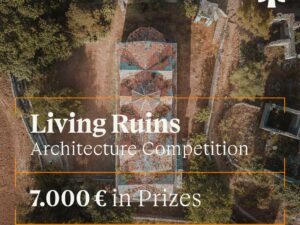- 7 Eylül 2011
- 4679 defa okundu.
Parks For The People
Parks For The People Yarışması'na son teslim tarihi 1 Kasım 2011.
About
This is a competition of imagination and application that is intentionally open-ended to ensure the creation of unique ideas. The overarching goal of the competition is to generate new and innovative ideas for the design and planning for a twenty-first century conception of national parks, the experiences of their visitors, the sustainability of their infrastructure, and their relationship to the public.
Background
For almost 100 years, national parks have provided the public with opportunities to witness the wonder and value of nature, to reflect and explore, to learn about a common history and heritage, and to be immersed in the uniqueness of a landscape. As stewards of these natural and cultural treasures, the National Park Service oversees parks that are constantly changing. The last great wave of national park design occurred in the 1950s, largely focused on automobile infrastructure. In this new century, America’s national parks are facing unprecedented challenges: shifting demographics, climate change, rapidly changing communications technologies, new transportation prototypes, and economic constraints are but a few of the urgent issues confronting today’s national park designers, planners, and managers.
This is also a time when popular interest in the design of public spaces has never been higher. This renaissance of interest has been stimulated in part by an intense focus on energy conservation, sustainability, and climate change. It is equally responsive to a growing commitment to broader inclusion and engagement of diverse communities and demographic groups who have not been traditional park users. How we plan and design our national parks in response to these changing imperatives will have an enormous impact on how successful we are at creating welcoming, meaningful, healthy, and enduring places that last well into the future.
The Process
The competition is organized into two distinct stages. During the first competition stage, teams will be responsible for assembling and submitting a proposal for a Spring 2012 studio class based around one of these seven national parks. This proposal will be created from faculty and student research that focuses on their chosen park site, and should be reflective of the Park Service design principles. This research may address specific park projects, but may also investigate design and planning solutions that consider the way a modern visitor of any age, ethnicity, and ability relates to a national park and its story. In addition, the research may explore National Park Service policy and how park design, planning, and management ideas are shaped by such policy.
This first stage of the competition gives schools an opportunity to rethink research agendas to be more multidisciplinary. To that end, participating schools could team up as a consortium to leverage complementary strengths and capacities. We strongly encourage interdisciplinary thinking and collaboration between designers and the environmental and social sciences, landscape ecology, communications, and other fields, along with new partnerships with local agencies, community groups, and nonprofits that may support each school’s studio work and further enrich the national park experience. At the same time, the competition aims to introduce new regional, public, private, and university partners to the Park Service and infuse the national parks’ design process with contemporary ideas and practices.
From this pool of proposals, seven student and faculty teams (one chosen for each of the seven regional parks) will be selected to proceed to the second competition stage and participate in a Spring 2012 semester design studio. The detailed brief for this Stage 2 studio will be determined after Stage 1 proposals have been evaluated by VAI, NPS, and the competition advisory team.
The competition will evolve as faculty and student research responds to the needs of the selected sites. As selected parks offer widely varying typologies for testing a range of design ideas, the competition seeks responses tailored to the issues and environment of each design studio’s chosen park. At the end of the competition, seven distinct studios will present design responses reflecting the unique issues, ecologies, and histories of that particular park type.
An awards ceremony will be held for the winning teams in Summer 2012, with Spring 2012 semester studio work exhibited online. A select number of students from the finalist teams will be eligible for paid summer internships with NPS in 2012 or 2013.






